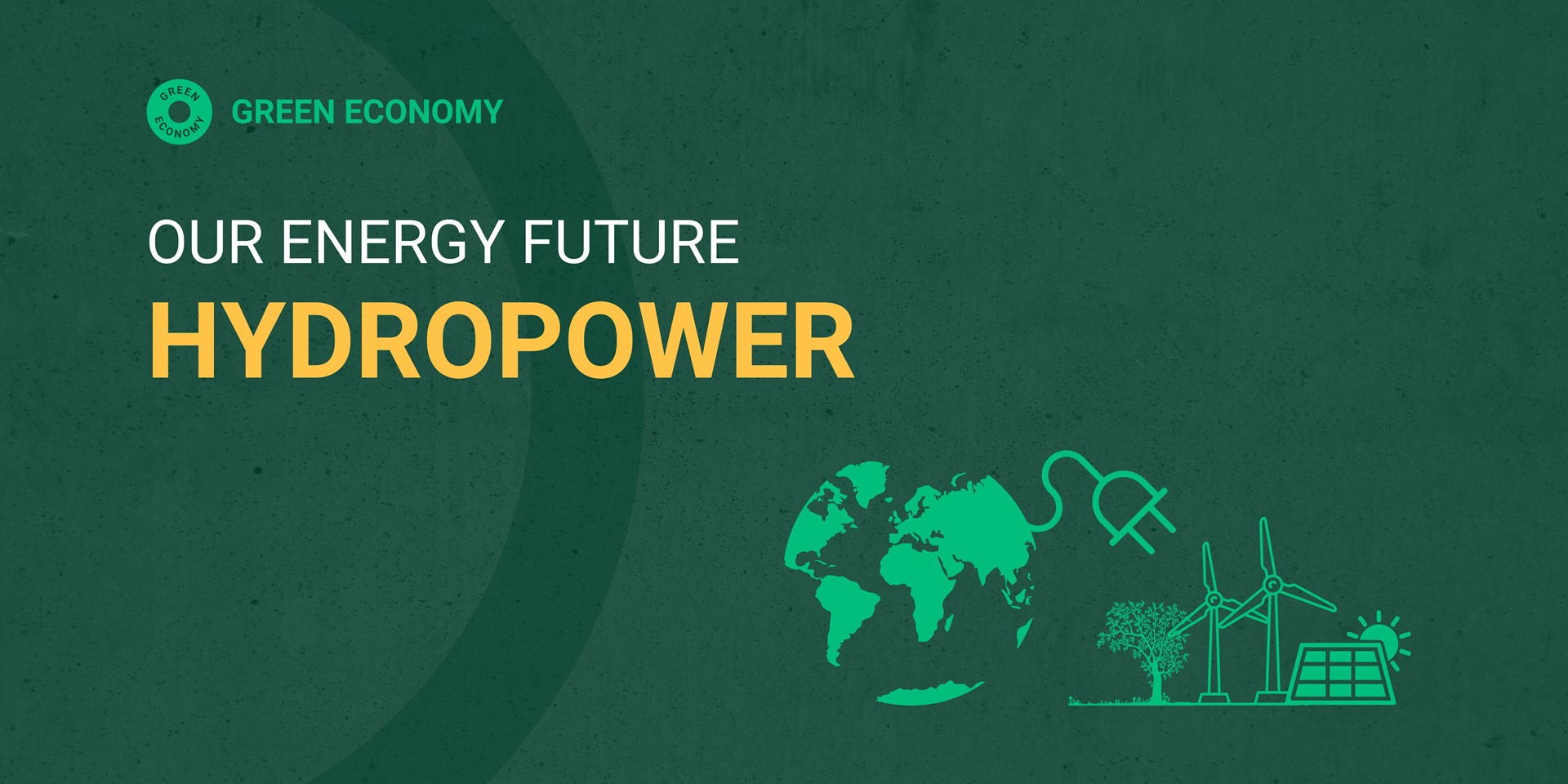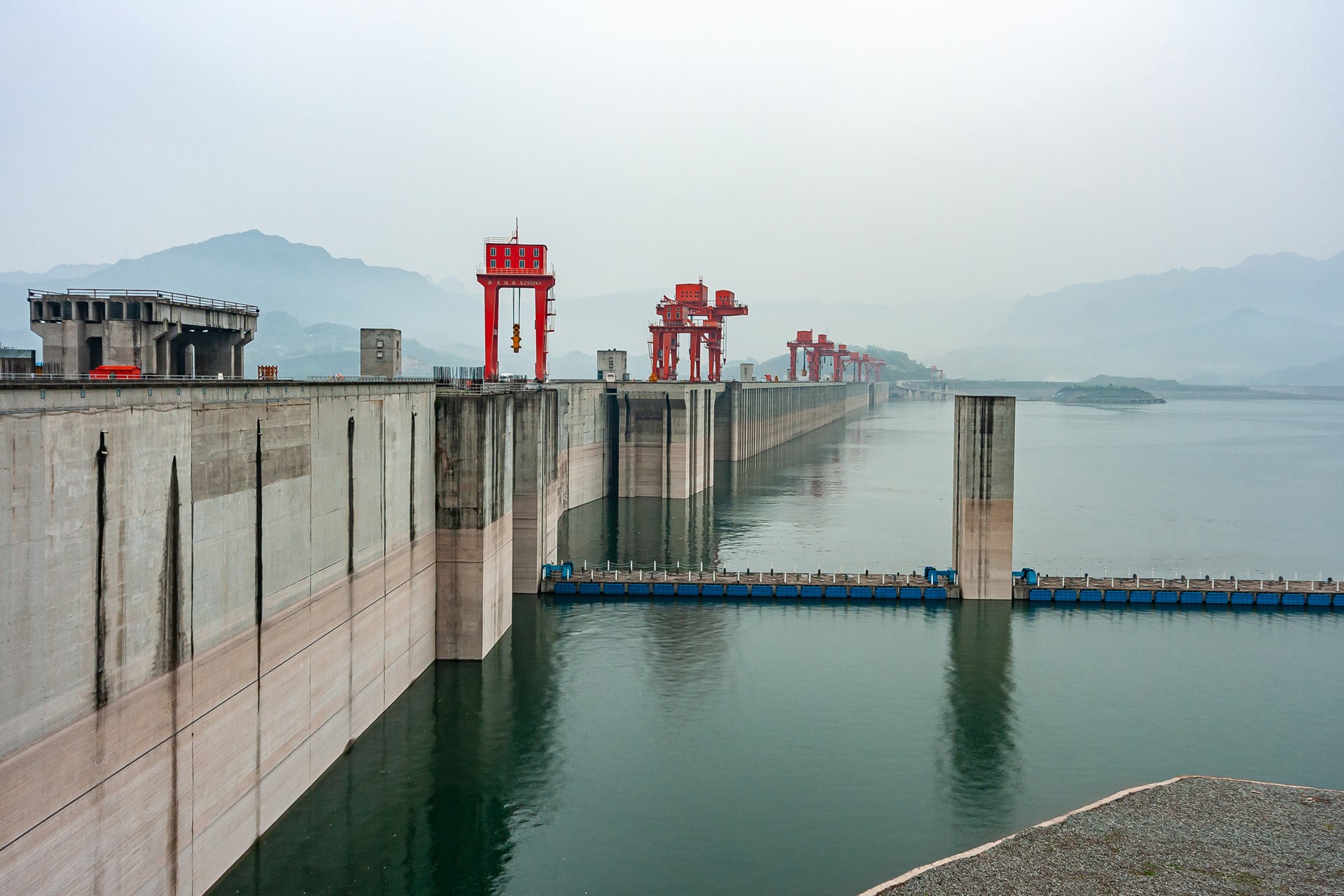Our Energy Future: Hydropower
Read time: 3 minutes

Read time: 3 minutes

Hydropower, known also as hydroelectric power, uses the natural flow of water to generate electricity. Although it may not be as commonly known and understood as wind and solar, hydropower is the most widely-used clean energy source in the world, contributing 4240.01 TWh to the global energy supply in 2023, compared to 2325.21 for wind, and 1641.58 for solar.
Hydropower systems work by collecting the kinetic energy of flowing water using turbines and converting this into electricity. Generally, the greater the height of the water, such as rivers flowing down mountains at higher speeds, the more electricity is generated.
Hydropower supplies are commonly 24 hours in nature, as they tap into the constant flow of water cycles. The elevation of a water cycle is known as the head, and this is a key determining factor in the amount of electricity it is able to produce. Mountainous areas and countries with rich flowing water supplies are better equipped to harness the full potential of hydropower.
In a hydropower plant, water flows through a pipe, known as a penstock, and fed into a turbine, mimicking the natural flow of rivers. Currently, China boasts some of the largest hydropower plants, namely the Three Gorges Dam, with their combined projects generating roughly 859 billion kWh per annum, followed by Brazil with an output of 411 billion kWh, and the U.S. with 373 billion kWh. As for Europe, Norway and Sweden are currently leading the way with hydropower generation.
The primary benefit of hydropower is that it’s reusable and sustainable. Hydropower doesn’t deplete the water supplies it uses in its process, and the water doesn’t need to be treated before or after use. Hydropower also generates no greenh9ouse gas emissions while it generates electricity.
Another key benefit is the flexibility of reservoirs and water cycles, meaning hydropower isn’t an intermittent energy source like wind and solar. What’s more, dams and reservoirs can be used to control and concentrate the flow of water, leading to more efficient energy production.
However, the placement of hypdropower plants means space is a limitation. Dams, for example, are very land intensive and protruding pieces of infrastructure. Their development can also cause environmental disruption, affecting fish migration in rivers and impacting delicate ecosystems if the dams are situated in biodiversity rich areas, such as rainforests.
Grid constraints are also a barrier to hydropower, particularly in the UK. Moving to a decarbonised grid raises capacity constraints for grid operators, curtailment issues, and storage limitations.
The UK currently has 1,657 active hydropower projects, equalling a total installed capacity of 2 GWs, total generation of 5,496 GWhs, storage capacity of 900 GWhs and undeveloped potential for a further 1 – 3 GWs. Hydropower presently generates 2 per cent of the UK’s annual energy generation.
The UK’s hydropower systems can be broken down into:


Pictured above: China's Three Gorges Dam


Small-scale microgeneration systems can be installed for properties to generate renewable energy, though these systems are not particularly common. Presently, the installation costs of these systems are high, but the maintenance is very low and installed systems can last for decades, generating 24 hour energy supplies.
However, these projects are site-specific as they require access to a water source with an effective head and flow. Shared hydropower projects may well be the solution for businesses and properties operating within similar regions.
Our teams offer support to help you reduce carbon, increase competitiveness and save money.
Based in Greater Manchester? Explore our fully-funded programmes.
Explore our training programmes to help you accelerate climate action, embed your environmental policy within your business and engage your team.
Contact us today to speak to a sustainability specialist, to help you improve the efficiency of your business, save money and reduce your carbon impact.
Share